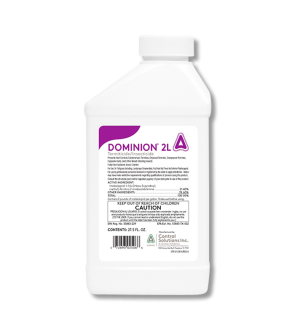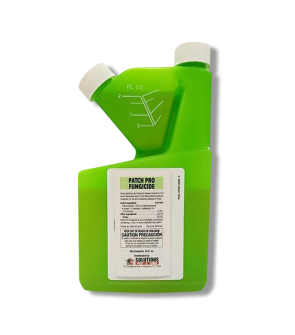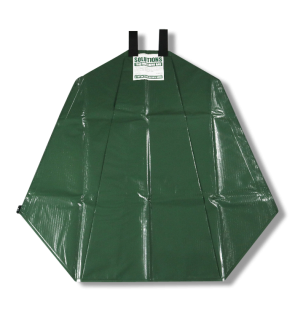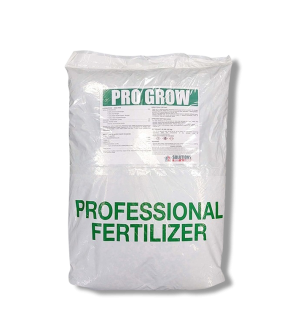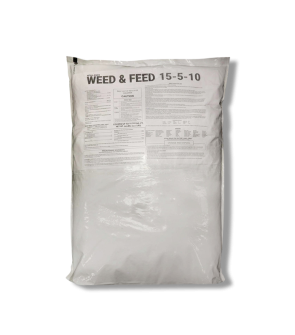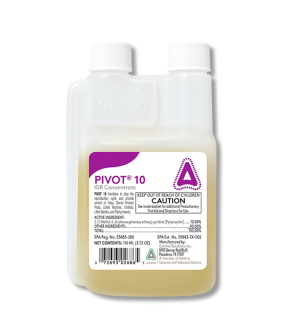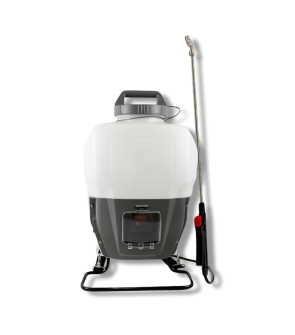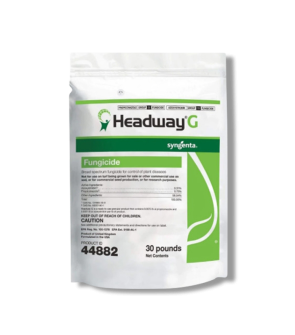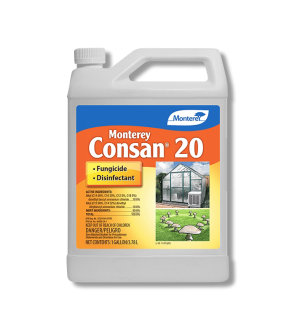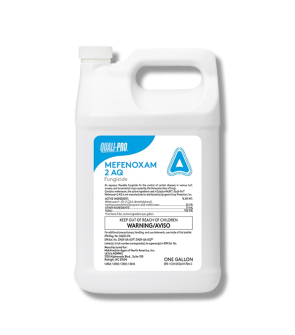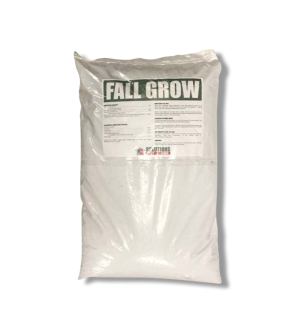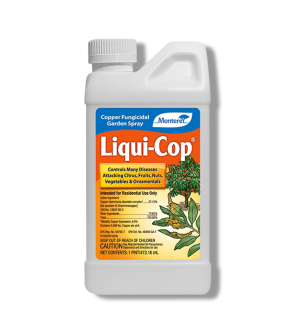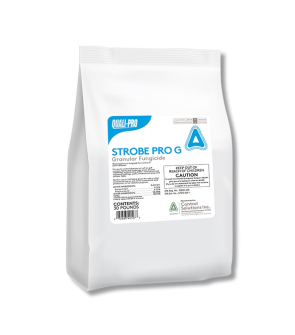Fungus & Diseases
Most Effective Products
Lawn Disease & Fungus Control: How to Get Rid of Lawn Diseases
This page is a general lawn disease and fungus control guide. Using the products and methods suggested you can get control of any lawn fungus or disease. The lawn disease category pages provide additional information on the different types of fungus and disease and specific treatment instructions and options. Follow these guides and use the recommended products and we guarantee 100% control of all lawn fungus issues.
Has your lush green lawn all of a sudden started experiencing patches or has started to brown? It can be a cause for concern as there may be a lawn disease or fungus present. Lawn fungus and disease can come in a variety of forms. Some signs of disease include discoloration, brown and yellow patches of dead grass, the appearance of mushrooms, spots on leaves, or slimy/powdery residue among other examples.
Lawn diseases and fungi can progress on a yard quickly, starting out as yellow, tan or brown spots in your yard before degrading into something worse, potentially even killing your turfgrass if there is no intervention.
If your lawn is suffering from fungus-based diseases, we can help. By using our cost-effective lawn fungus killers and following the step by step instructions in our DIY lawn and fungus treatment guide below, you’re guaranteed to make your lawn disease-free while saving money.
Identification

Disease-causing fungi are almost always present in the soil, waiting for the opportune time when conditions are favorable to attack. Depending on the type of disease or fungus, you may see different symptoms. It is important to identify the specific disease your lawn has before conducting lawn fungus treatment. Misidentification can lead to using the wrong treatment methods which can cost you time and money.
- Disease and fungus can show up in residential lawns, gardens, landscapes and other areas where plants are growing. It is also not uncommon to mistake lawn disease for damage left behind by turf pests. Pests like grubs, chinch bugs, and sod webworms will damage turf in a way that resembles lawn disease.
- The areas where fungus is found are often under stress from the environment or climate conditions. Fungi and disease can also be a sign that you are not giving your turf the proper care and maintenance.
- There’s no one reason disease and fungus can develop as there may be a combination of different causes such as overwatering, using the wrong type of fertilizer and not mowing properly among others.
- For instance, if you have brown patch, you’ll notice irregular patches of dead grass. If you have rust, this is indicated by seeing your blades of grasses coated with a distinctive orange rust-like appearance. If you have fairy ring, you'll see mushrooms.
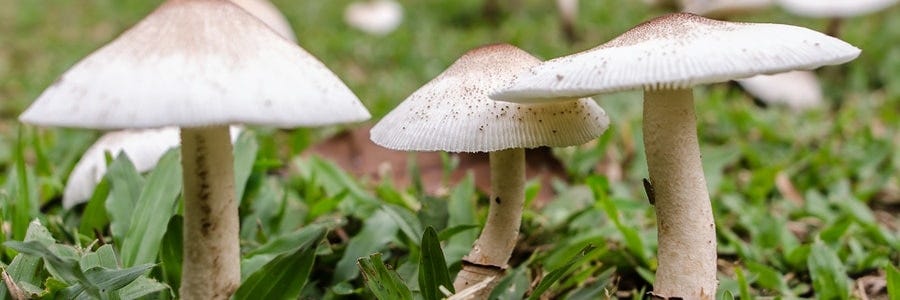
Browse our lawn disease and fungus subcategories to learn about the most common diseases and find out which one you have and how to best control it using our lawn fungus treatment products and techniques.
Inspection
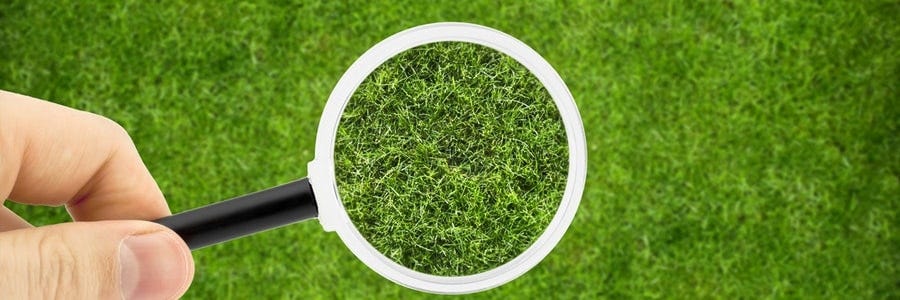
Once you have confirmed what lawn fungus or disease is present on your lawn, you can then proceed with an inspection. During this phase, you will pinpoint the areas where the disease has taken hold and analyze the lawn conditions that may be helping the fungus to thrive. This information will help you to determine where to focus your fungicide application.
Where to Inspect
Conduct a detailed inspection of your lawn and record your observations. Ask yourself a series of questions as you go along such as:
- Is your grass under stress? (Extreme weather, too much foot traffic etc.)
- Does your soil lack sufficient nutrients?
- Are there insect pests present that are contributing to the damage which brought about the disease?
What to Look For
Observe your lawn turf, garden plants or ornamentals for symptoms of disease, which can vary—from discoloration to mold, to the appearance of mushrooms. Anything that seems off or unhealthy about a plant should be noted.
Checking the weather conditions when the disease is thriving is important. Warm-season grasses are most vulnerable to disease when temperatures are cooler than normal.
Cool-season grasses are at risk of coming down with a disease when the weather is warmer than normal.
Other weather patterns to look for are excessively wet or dry weather and cloudy or overcast skies. If any of these conditions prevail, then chances of disease being present go up.
Using your findings from the inspection you can then move forward with a lawn fungus treatment approach.
Treatment
Prior to using any lawn fungus treatment chemicals, make sure you are equipped with the necessary PPE (gloves, goggles, mask).
Our top lawn fungus killer recommendation is Patch Pro or Systemic Fungicide RTS. These products contain the active ingredient propiconazole and can control a broad spectrum of common lawn diseases cost-effectively.
Step 1 - Mix Patch Pro Fungicide or Fungicide of Your Choosing

It's important to first determine how much Patch Pro you will need by measuring the square footage of the area you wish to treat. Use either a hose-end sprayer or a pump sprayer.
Depending on the disease you wish to treat, Patch Pro should be mixed at a rate between .5 to 4 ounces per 1000 square feet in a gallon of water. If you have a yard that is 2,500 square feet, you would need to mix 1.5 to 10 ounces in 2.5 gallons of water.
In a hand-pump or hose-end sprayer, mix the appropriate amount of Patch Pro with the correct amount of water. Be sure not to put in too much water as it will lessen the effectiveness of the fungicide product.
Pour the mixture into the sprayer tank and thoroughly agitate the solution.
Step 2 - Apply Fungicide To Lawn

Spray the mixture onto the grass or ornamental plants until the mixture is dripping from the blades and leaves. For best results, use a nozzle that sprays out in a fan spray setting at about 60 PSI.
Apply the selected fungicide during the cool morning hours. If the temperature is more than 90 degrees F, wait until it is cooler to apply the fungicide.
It is important that you first know the type of fungus or disease your lawn has before proceeding with selecting a fungicide for treatment. Once the disease and/or fungus has been properly identified, you can take a look at what fungicides work best to treat your lawn.
Step 3 - Follow-up Treatment

Depending on the severity of your disease you may have to re-apply the fungicide until you do not see the presence of the fungus. Reapply at 7 to 14-day intervals 2 or more times to achieve complete control of the target fungus or disease.
The reason for this is to account for weather and chemical breakdown. Follow specific product applications found on the label.
Prevention

To keep lawn disease out of your yard you will need to monitor your turf and plants regularly and eliminate conducive conditions that will discourage fungi from developing and keep your lawn healthy.
- Preventative applications of lawn fungus treatment should be made when environmental conditions are conducive to fungal disease development. Periods of excessive rain, high humidity, seasonal transitions and an overabundance of nitrogen in the soil are some conditions that are favorable to most turf fungal disease pressure.
- If any of these conditions exist, this would be a good time to perform preventative applications of systemic fungicide. Feed your lawn with fertilizer to ensure that your lawn soil is not nutrient deficient. A nutrient-rich lawn is better equipped to fight off disease, pests, and weeds.
- Water your lawn deeply and infrequently to encourage strong root systems. Mow at the right height for your selected grass. Mowing too short weakens the grass plant, making it more susceptible to disease.
Key Takeaways
What are Lawn Fungus and Disease?
- Lawn fungus and disease are ailments to lawns caused by pathogens that take hold on grass and can range from cosmetic damage to your lawn to grass death.
- There are a large variety of different lawn diseases and fungi which can affect a lawn. Observe your lawn closely and view the symptoms to figure out what disease is present.
How To Get Rid of Lawn Fungus and Disease
- We recommend Patch Pro for treating most common lawn diseases. Be sure to identify which fungus you have so you can select the right lawn fungus control product for your particular problem.
Preventing Disease and Fungus Re-establishment
- Prevent the re-emergence of lawn diseases and fungus by keeping up with regular lawn maintenance tasks to keep your lawn healthy (mowing, fertilizer, proper watering, etc).

